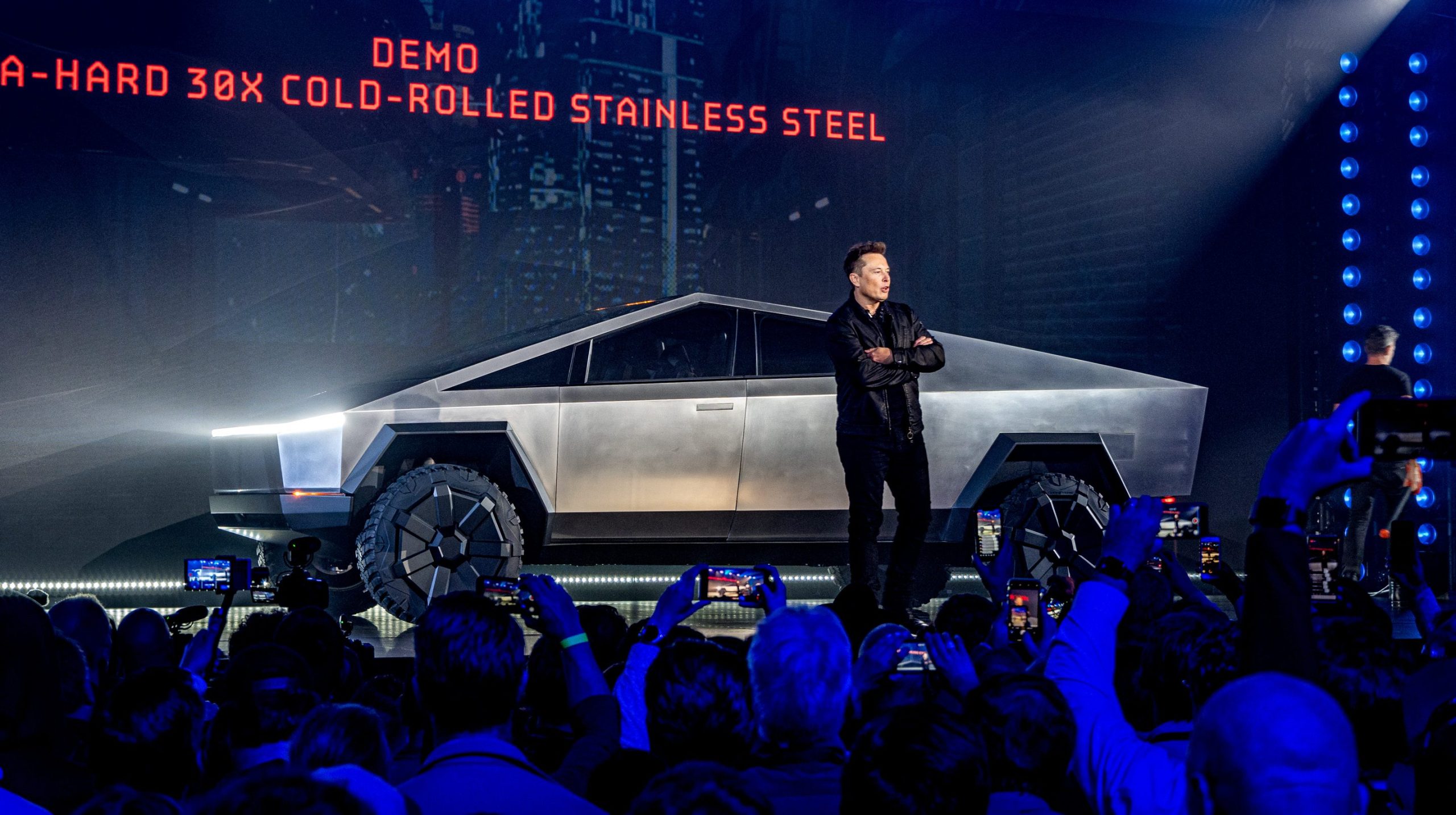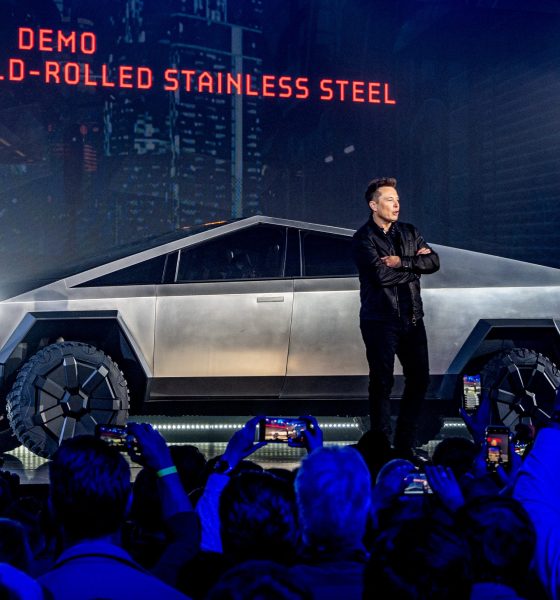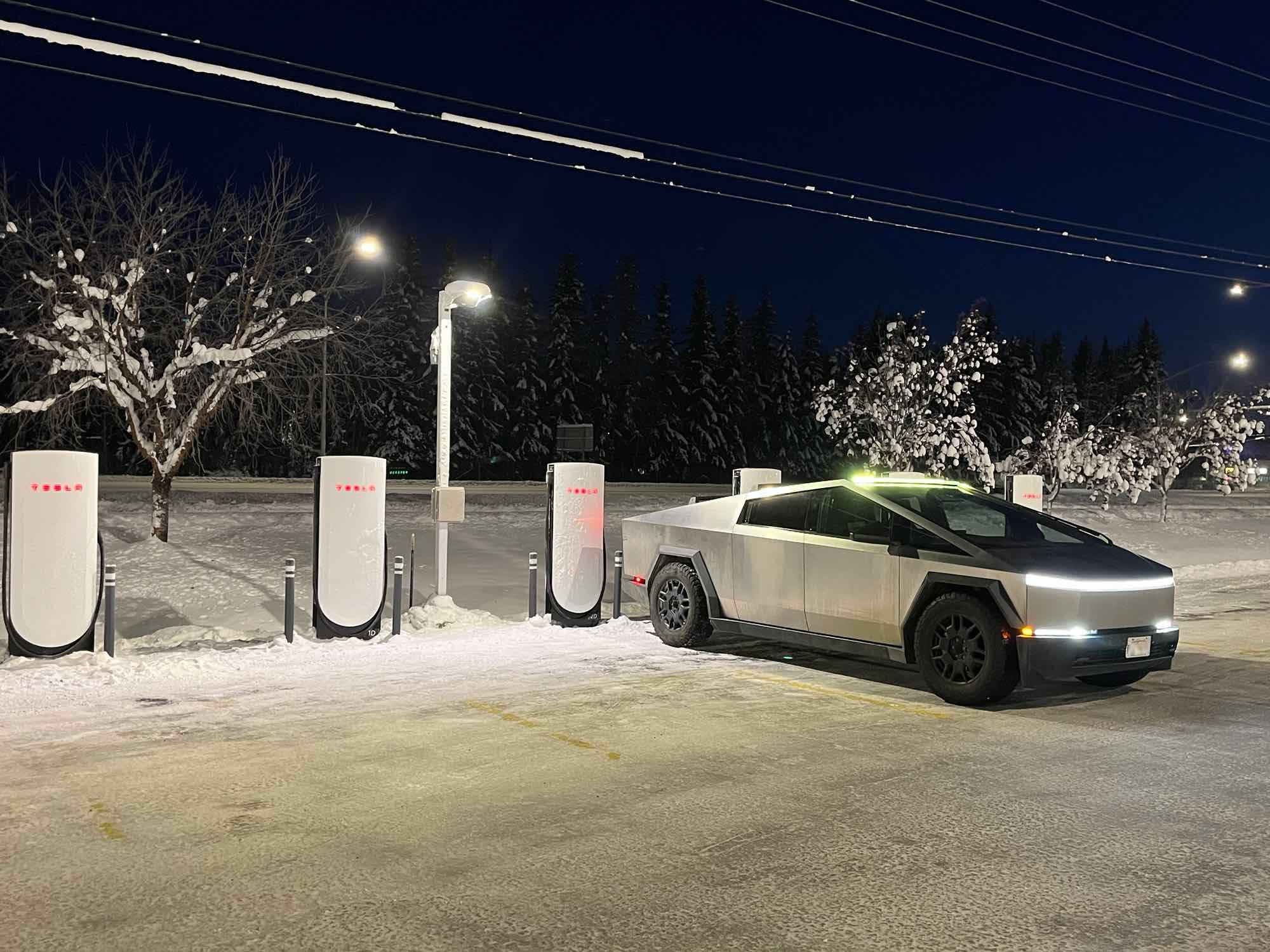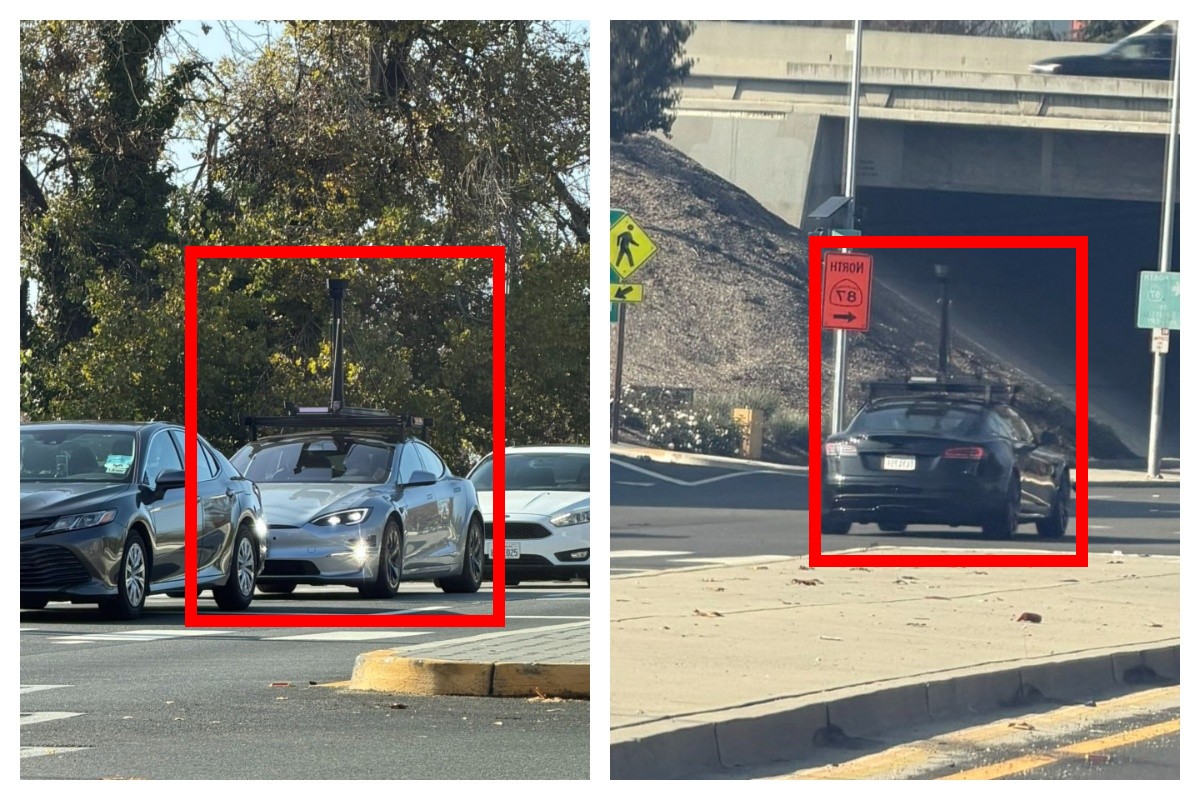

News
EXCLUSIVE: Tesla Cybertruck battery packs to be built at Fremont Factory
Tesla plans to start building battery packs for the upcoming Cybertruck on a new cell manufacturing line in the Fremont factory, people with knowledge of the project told Teslarati.
In August, we reported that Tesla had filed to build a new battery manufacturing equipment line on the second floor of the Fremont factory. This filing, which was submitted to the City of Fremont on August 30, relates to the module portion of the line, Tesla said.
Tesla described the project as “CTA Battery B-Build,” the filing shows.
Credit: City of Fremont
Tesla is ultimately planning to build the Cybertruck in Austin at Gigafactory Texas. However, battery cells and cell pack manufacturing are not yet ready to take off at the new Tesla plant, which is located just outside Austin. Tesla applied to build a battery and cathode manufacturing building at Gigafactory Texas earlier this year, and while the project has been started, it likely will not be ready for the Cybertruck’s projected launch in mid-2023.
With an extensive order log that features over 1 million total reservations, Tesla is preparing for Cybertruck manufacturing by building the battery packs at a plant that is already operational. The Fremont facility, the only Tesla plant manufacturing all four vehicles the company builds, was ultimately chosen for the task of kicking off Cybertruck pack manufacturing, Teslarati confirmed with sources familiar with the matter.
Cybertruck Battery Pack Manufacturing will start in Fremont
Sources familiar with the matter told Teslarati the second-floor manufacturing line that Tesla filed to build in August will manufacture the Cybertruck packs. Tesla will take the 4680 battery cells produced at the Kato Road facility or another previously utilized cell design manufactured at Gigafactory Nevada and put them into modules and packs that are manufactured on the new Fremont battery line.
Currently, the line is being completed by construction crews on site, who are making daily progress. Additionally, Tesla engineers are installing automation equipment to produce the Cybertruck battery packs.
Tesla did not immediately respond to our request for comment.
Kicking Cybertruck Module Production into “Plaid Mode”
Tesla is also working hard to kick off Cybertruck pack production as time is extremely limited. Tesla has a series of vehicles, referred to as “carriers,” which transport batteries throughout the factory. The company recently ordered around 300 new carriers for the factory as cell and battery pack manufacturing is set to ramp drastically.
The sources also said the Cybertruck battery pack line is currently being tested with Tesla’s automation equipment. Tesla is working to ramp the line quickly as Cybertruck vehicle manufacturing is planned for next year at Gigafactory Texas.
2023: The Year of the Tesla Cybertruck?
Tesla is set to build the Cybertruck at Gigafactory Texas. After unveiling the all-electric pickup in 2019, Tesla has delayed initial production on several occasions due to supply chain issues and other challenges.
“In 2022, supply chain will continue to be the fundamental limiter of output across all factories,” Musk said during Tesla’s Q4 and 2021 Full Year Earnings Call in January. So the chip shortage, while better than last year, is still an issue. And, yeah, so that’s — there are multiple supply chain challenges.”
Musk went on to say that the challenges would delay the launch of any new products in 2022. “We will, however, do a lot of engineering and tooling, what not to create those vehicles: Cybertruck, Semi, Roadster, Optimus, and be ready to bring those to production hopefully next year. That is most likely.”
Although Tesla is planning to begin deliveries of the Semi on December 1, all other projects have been effectively delayed until next year, but preparation to launch those projects is evidently a priority within the factories.
4680 cells are not constrained but are they going into the Cybertruck?
Tesla’s Vice President of Powertrain Drew Baglino detailed earlier this year that the company was not constrained in terms of 4680 battery cell availability.
“So throughout 2021, we focused on growing cell supply alongside our in-house 4680 effort to provide us flexibility and insurance as we attempt to grow as fast as possible,” Baglino said on the Q4 and Full Year 2021 Earnings Call in January. “4680 cells are not a constraint to our 2022 volume plans based on the information we have.”
What Baglino said next on the call likely indicates what Tesla was preparing the Cybertruck for: pack manufacturing at Fremont, shipping the packs to Texas, and then installing them into vehicles:
“But we are making meaningful progress of the ramp curve in Kato. We’re building 4680 structural packs every day, which are being assembled into vehicles in Texas. I was driving one yesterday and the day before. And we believe our first 4680 vehicles will be delivered this quarter.”
The Kato Road facility has supported Tesla’s 4680 cell needs thus far. The 4680 packs were installed on some Gigafactory Texas-built Model Ys, and were reviewed by Munro Live earlier this year. Fremont will likely support Cybertruck pack manufacturing for some time, utilizing cells from Kato Road and from suppliers like Panasonic when they ultimately being manufacturing the battery for Tesla.
As Cybertruck manufacturing ramps up into late 2023, 2024, and beyond, packs will then be at Fremont and Gigafactory Texas, which would likely entirely support Cybertruck production.
I’d love to hear from you! If you have any comments, concerns, or questions, please email me at joey@teslarati.com. You can also reach me on Twitter @KlenderJoey, or if you have news tips, you can email us at tips@teslarati.com.

Cybertruck
Tesla updates Cybertruck owners on timeline of massive feature yet to ship

Tesla is updating Cybertruck owners on its timeline of a massive feature that has yet to ship: Powershare with Powerwall.
Powershare is a bidirectional charging feature exclusive to Cybertruck, which allows the vehicle’s battery to act as a portable power source for homes, appliances, tools, other EVs, and more. It was announced in late 2023 as part of Tesla’s push into vehicle-to-everything energy sharing, and acting as a giant portable charger is the main advantage, as it can provide backup power during outages.
Cybertruck’s Powershare system supports both vehicle-to-load (V2L) and vehicle-to-home (V2H), making it flexible and well-rounded for a variety of applications.
However, even though the feature was promised with Cybertruck, it has yet to be shipped to vehicles. Tesla communicated with owners through email recently regarding Powershare with Powerwall, which essentially has the pickup act as an extended battery.
Powerwall discharge would be prioritized before tapping into the truck’s larger pack.
However, Tesla is still working on getting the feature out to owners, an email said:
“We’re writing to let you know that the Powershare with Powerwall feature is still in development and is now scheduled for release in mid-2026.
This new release date gives us additional time to design and test this feature, ensuring its ability to communicate and optimize energy sharing between your vehicle and many configurations and generations of Powerwall. We are also using this time to develop additional Powershare features that will help us continue to accelerate the world’s transition to sustainable energy.”
Owners have expressed some real disappointment in Tesla’s continuous delays in releasing the feature, as it was expected to be released by late 2024, but now has been pushed back several times to mid-2026, according to the email.
Foundation Series Cybertruck buyers paid extra, expecting the feature to be rolled out with their vehicle upon pickup.
Cybertruck’s Lead Engineer, Wes Morrill, even commented on the holdup:
As a Cybertruck owner who also has Powerwall, I empathize with the disappointed comments.
To their credit, the team has delivered powershare functionality to Cybertruck customers who otherwise have no backup with development of the powershare gateway. As well as those with solar…
— Wes (@wmorrill3) December 12, 2025
He said that “it turned out to be much harder than anticipated to make powershare work seamlessly with existing Powerwalls through existing wall connectors. Two grid-forming devices need to negotiate who will form and who will follow, depending on the state of charge of each, and they need to do this without a network and through multiple generations of hardware, and test and validate this process through rigorous certifications to ensure grid safety.”
It’s nice to see the transparency, but it is justified for some Cybertruck owners to feel like they’ve been bait-and-switched.
News
Tesla’s northernmost Supercharger in North America opens

Tesla has opened its northernmost Supercharger in Fairbanks, Alaska, with eight V4 stalls located in one of the most frigid cities in the U.S.
Located just 196 miles from the Arctic Circle, Fairbanks’s average temperature for the week was around -12 degrees Fahrenheit. However, there are plenty of Tesla owners in Alaska who have been waiting for more charging options out in public.
There are only 36 total Supercharger stalls in Alaska, despite being the largest state in the U.S.
Eight Superchargers were added to Fairbanks, which will eventually be a 48-stall station. Tesla announced its activation today:
North America’s northernmost Supercharger Fairbanks, AK (8 stalls) opened to public. https://t.co/M4l04DZ6B5 pic.twitter.com/zyL6bDuA93
— Tesla Charging (@TeslaCharging) December 12, 2025
The base price per kWh is $0.43 at the Fairbanks Supercharger. Thanks to its V4 capabilities, it can charge at speeds up to 325 kW.
Despite being the northernmost Supercharger in North America, it is not even in the Top 5 northernmost Superchargers globally, because Alaska is south of Norway. The northernmost Supercharger is in Honningsvåg, Norway. All of the Top 5 are in the Scandanavian country.
Tesla’s Supercharger expansion in 2025 has been impressive, and although it experienced some early-quarter slowdowns due to V3-to-V4 hardware transitions, it has been the company’s strongest year for deployments.
🚨🚨 Tesla Supercharging had a HUGE year, and they deserve to be recognized.
🍔 Opened Tesla Diner, a drive-in movie theater with awesome, Chef-curated cuisine
🔌 Gave access to Superchargers to several EV makers, including Hyundai, Genesis, Mercedes-Benz, Kia, Lucid, Toyota,… pic.twitter.com/yYT2QEbqoW
— TESLARATI (@Teslarati) December 10, 2025
Through the three quarters of 2025, the company has added 7,753 stations and 73,817 stalls across the world, a 16 percent increase in stations and an 18 percent increase in stalls compared to last year.
Tesla is on track to add over 12,000 stalls for the full year, achieving an average of one new stall every hour, an impressive statistic.
Recently, the company wrapped up construction at its Supercharger Oasis in Lost Hills, California, a 168-stall Supercharger that Tesla Solar Panels completely power. It is the largest Supercharger in the world.
News
Tesla shocks with latest Robotaxi testing move
Why Tesla has chosen to use a couple of Model S units must have a reason; the company is calculated in its engineering and data collection efforts, so this is definitely more than “we just felt like giving our drivers a change of scenery.”

Tesla Model S vehicles were spotted performing validation testing with LiDAR rigs in California today, a pretty big switch-up compared to what we are used to seeing on the roads.
Tesla utilizes the Model Y crossover for its Robotaxi fleet. It is adequately sized, the most popular vehicle in its lineup, and is suitable for a wide variety of applications. It provides enough luxury for a single rider, but enough room for several passengers, if needed.
However, the testing has seemingly expanded to one of Tesla’s premium flagship offerings, as the Model S was spotted with the validation equipment that is seen entirely with Model Y vehicles. We have written several articles on Robotaxi testing mules being spotted across the United States, but this is a first:
🚨 Tesla is using Model S vehicles fitted with LiDAR rigs to validate FSD and Robotaxi, differing from the Model Ys that it uses typically
Those Model Y vehicles have been on the East Coast for some time. These Model S cars were spotted in California https://t.co/CN9Bw5Wma8 pic.twitter.com/UE55hx5mdd
— TESLARATI (@Teslarati) December 11, 2025
Why Tesla has chosen to use a couple of Model S units must have a reason; the company is calculated in its engineering and data collection efforts, so this is definitely more than “we just felt like giving our drivers a change of scenery.”
It seems to hint that Tesla could add a premium, more luxury offering to its Robotaxi platform eventually. Think about it: Uber has Uber Black, Lyft has Lyft Black. These vehicles and services are associated with a more premium cost as they combine luxury models with more catered transportation options.
Tesla could be testing the waters here, and it could be thinking of adding the Model S to its fleet of ride-hailing vehicles.
Reluctant to remove the Model S from its production plans completely despite its low volume contributions to the overall mission of transitioning the world to sustainable energy, the flagship sedan has always meant something. CEO Elon Musk referred to it, along with its sibling Model X, as continuing on production lines due to “sentimental reasons.”
However, its purpose might have been expanded to justify keeping it around, and why not? It is a cozy, premium offering, and it would be great for those who want a little more luxury and are willing to pay a few extra dollars.
Of course, none of this is even close to confirmed. However, it is reasonable to speculate that the Model S could be a potential addition to the Robotaxi fleet. It’s capable of all the same things the Model Y is, but with more luxuriousness, and it could be the perfect addition to the futuristic fleet.








